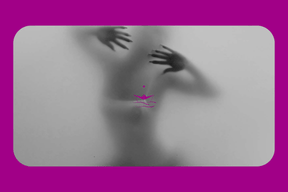Dance and Vaginismus
Even though we don’t often talk about vaginismus openly, you may have noticed that it’s a common condition and one that you might occasionally experience yourself. Vaginismus is defined as an “involuntary, conditioned muscle reflex,” and these two words are quite important: involuntary and conditioned. As humans, we become uncomfortable with any action we perform involuntarily. If this involuntary response is linked to something we actually want, then we face an even bigger problem: the paradox that causes further tension. I want it, but I’m tensing up! But why?!
And within you, a cry or perhaps a numbness rises up.
Certain experiences that make us feel bad—physical abuse, psychological abuse, violence, witnessing something unpleasant, feeling misunderstood, or not being cared for—leave marks on our bodies. And even though we think, or even know, that these events are in the past, our body tenses and locks up as if it’s reliving the same experience when triggered, taking on a sort of “protective” mode.
No matter how much we tell ourselves that there’s nothing to protect against here and now, the body repeats the same cycle over and over again, turning it into a nightmare. Especially if you want to engage in sexual intercourse but continue to tense up, I understand the confusion and sadness this creates.
This often leads to a situation where we know the problem but can’t find the solution. Seeking support is one of the best steps we can take. You don’t have to solve anything on your own.
We can start by letting go of the idea of the “strong person” and reminding ourselves that as humans, we heal by supporting one another. Sometimes, just knowing this can even help ease the tension.
You are not alone, there is a solution for this, and no, it won’t last forever.
First, we know that this is a muscle contraction, and the needed action is to relax. But knowing this might not help you relax. Because to relieve a reflex in the body, you need to work with the body itself. Trying to calm your body by telling it, “Come on, relax already, why aren’t you relaxing, stop tensing up!” doesn’t really work. You’ve probably tried that.
In these cases, we must include the body in our solution.
In dance practices that focus on loosening, shaking, and releasing the pelvis, I’ve observed that with regular practice, the body gradually lets go of the tension reflex and shifts into a state of safety and surrender.
Loosening the pelvis also requires a good connection with the ground. Understanding the entire body, connecting with it, and feeling free within it—when combined with the joy of dancing—change our reflexes.
Since dance and movement are some of humanity’s oldest forms of communication, they allow us to make contact with our unconscious, with all those involuntary actions. Through carefully and thoughtfully designed dance practices, you can explore the depths of your pelvis, reconnect with it, and release some of the emotions stored there, leading to a form of cleansing. Especially if you do this with support, like in a group—experiencing it as a ritual, much like in ancient tribes—it will undoubtedly take you from one place to another.
We teach our bodies so much through dance, and then our bodies teach us. But humanity constantly tries to solve its problems while sitting still. Or they press down hard on the existing problem, trying to relax. “If trauma is to be transformed, we must learn not to confront it directly,” Peter Levine writes in Waking the Tiger.
Instead of poking at our pain over and over again, let’s allow gentle, graceful, and compassionate physical actions to enter our cells and relax us. Belly dancing and hip-shaking movements, performed with a broad consciousness, will reduce the need for tension because both dances focus on relaxing the pelvis.
And as you deepen in your dance, you will see that there is even more beyond this…


